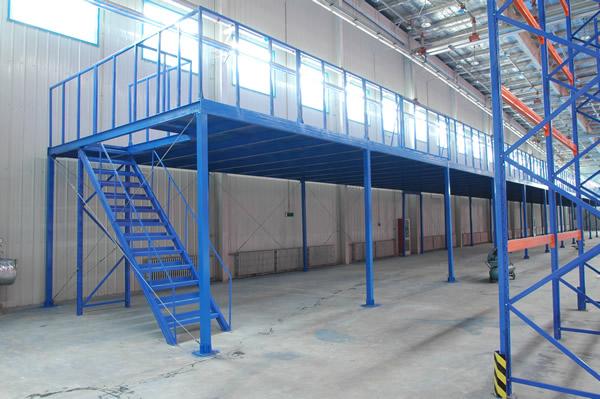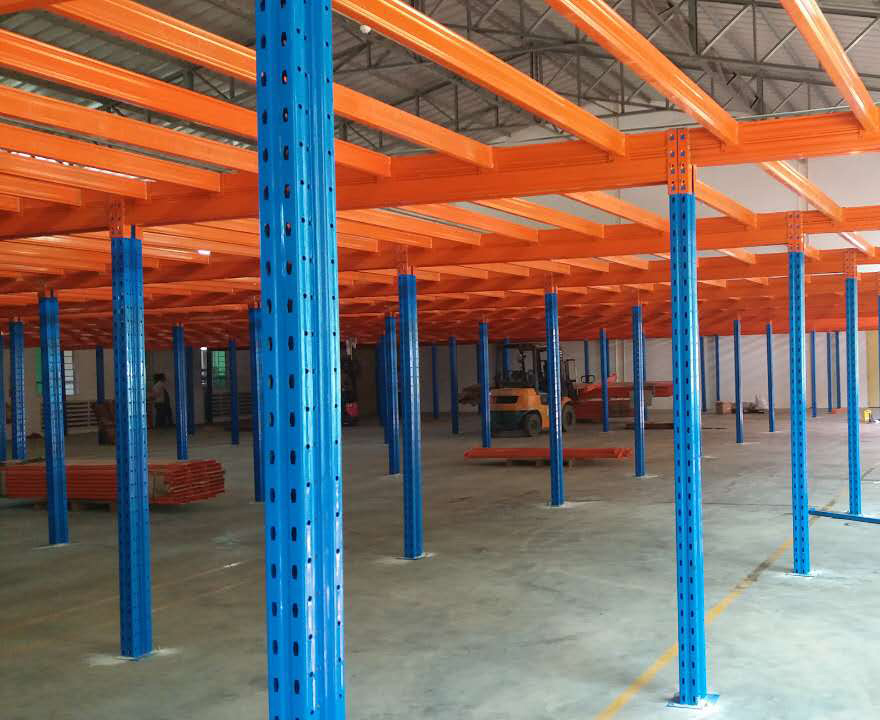When it comes to optimizing warehouse space, tall pallet racking has become a game-changer for many businesses. With the constant pressure to maximize storage capacity without expanding footprints, this high-rise storage solution offers a practical answer. But what exactly is tall pallet racking, and why is it so crucial in today's logistics and supply chain environments? In this article, we'll dive into the key aspects of tall pallet racking, covering its benefits, selection criteria, cost considerations, and more. Whether you're a warehouse manager or a business owner, understanding these insights can help you make informed decisions that boost efficiency and productivity.
Tall pallet racking refers to storage systems designed to utilize vertical space in warehouses, often reaching heights of 30 feet or more. These systems are engineered to handle heavy loads safely, making them ideal for facilities with high inventory turnover. As e-commerce and global trade continue to grow, the demand for efficient storage solutions like tall pallet racking has skyrocketed. By the end of this read, you'll have a clear picture of how to leverage this technology for your operations, along with answers to common questions in our FAQ section.

Tall pallet racking is a type of storage system that allows warehouses to stack pallets vertically, significantly increasing storage density. Typically constructed from steel, these racks consist of upright frames and horizontal beams that can be adjusted to accommodate various pallet sizes. The design focuses on accessibility and safety, often incorporating features like safety locks and reinforced connectors. In essence, tall pallet racking transforms underutilized vertical space into functional storage areas, enabling businesses to store more goods without the need for physical expansion. This makes it a cornerstone of modern warehouse management, especially in industries like retail, manufacturing, and distribution.
The mechanics are straightforward: pallets are loaded onto the beams using forklifts or other material handling equipment. The height of the racking allows for multiple levels of storage, which can be customized based on inventory needs. For instance, in a high-density setup, tall pallet racking might include narrow aisles to further optimize space. This flexibility is one reason why many facilities are turning to tall racking systems to handle seasonal peaks or long-term storage requirements.
One of the primary advantages of tall pallet racking is its ability to maximize storage capacity. By going vertical, warehouses can double or even triple their storage without increasing their footprint. This is particularly valuable in urban areas where real estate costs are high. Additionally, tall pallet racking improves inventory organization, making it easier to implement systems like FIFO (first-in, first-out) or LIFO (last-in, first-out). This leads to faster retrieval times and reduced labor costs.
Safety is another significant benefit. Modern tall pallet racking systems are built to withstand heavy loads and include safety features such as impact guards and seismic ratings. This reduces the risk of accidents and ensures compliance with industry regulations. Moreover, these systems enhance overall warehouse efficiency by streamlining workflows. For example, with proper layout planning, tall racking can minimize travel time for forklifts, boosting productivity. In the long run, investing in tall pallet racking can result in substantial cost savings through better space utilization and reduced operational delays.
Selecting the appropriate tall pallet racking for your warehouse involves several factors. First, assess your storage needs, including the types of products, weight capacities, and turnover rates. For instance, if you handle bulky items, you might need a system with higher beam levels and robust support. Next, consider the available ceiling height and floor space. Tall pallet racking installations require adequate vertical clearance, so measure your facility's dimensions carefully to avoid compatibility issues.
Another critical aspect is the racking configuration. Options include selective racking for easy access or drive-in racking for high-density storage. It's also wise to evaluate the material and durability of the racking components. Steel is common due to its strength, but coatings like powder coating can add corrosion resistance. Don't forget to factor in future scalability—your tall pallet racking system should be adaptable to growing business demands. Consulting with a professional can help you tailor the solution to your specific requirements, ensuring a smooth implementation.
When it comes to cost, tall pallet racking represents a significant investment, but one that often pays off through improved efficiency. The initial expenses include the racking units, installation labor, and any necessary accessories like decking or safety nets. On average, costs can range from a few thousand to tens of thousands of dollars, depending on the system's height and complexity. However, this is often offset by the long-term benefits, such as reduced per-pallet storage costs and lower expenses from avoiding facility expansions.
Budgeting should also account for maintenance and potential upgrades. Regular inspections and repairs are essential to maintain the integrity of tall pallet racking systems. Additionally, consider the return on investment (ROI)—many businesses see a payback within a few years due to increased storage capacity and operational efficiencies. To manage costs, explore financing options or phased implementations. Remember, skimping on quality can lead to safety hazards and higher costs down the line, so prioritize reliable suppliers and products.

Proper installation is crucial for the safety and performance of tall pallet racking. It's recommended to hire experienced professionals who follow industry standards, such as those set by the Rack Manufacturers Institute (RMI). The process typically involves site preparation, assembly of upright frames and beams, and securing the structure to the floor. During installation, ensure that the racking is level and aligned to prevent load imbalances.
Maintenance is equally important to extend the lifespan of your tall pallet racking. Conduct regular inspections for signs of damage, such as bent beams or loose connections. Implement a schedule for cleaning and lubricating moving parts, if applicable. Training staff on safe usage, including proper loading techniques and weight limits, can prevent accidents. By adhering to these practices, you'll minimize downtime and protect your investment in tall racking systems.
Tall pallet racking is versatile and finds applications across various sectors. In the retail industry, it supports high-volume inventory management, allowing stores to handle seasonal surges efficiently. Manufacturing plants use tall pallet racking to store raw materials and finished goods, streamlining production lines. Logistics and distribution centers benefit from its high-density storage, which speeds up order fulfillment and reduces shipping times.
For example, in cold storage facilities, tall pallet racking helps organize perishable items while withstanding low temperatures. Similarly, in automotive warehouses, these systems store heavy parts securely. The adaptability of tall racking solutions makes them suitable for both small businesses and large corporations, highlighting their role in driving operational excellence.
In summary, tall pallet racking is a powerful tool for enhancing warehouse efficiency and storage capacity. From its space-saving design to its safety features, this system offers numerous benefits that can transform your operations. By carefully selecting, installing, and maintaining your tall pallet racking, you can achieve significant cost savings and improved productivity. As you consider integrating this solution, keep the insights shared here in mind to make the most of your investment. If you have more questions, check out the FAQ section below for quick answers.
Q1: What is the maximum height for tall pallet racking systems?
A1: The maximum height for tall pallet racking can vary, but it often reaches up to 50 feet or more, depending on the building structure and safety regulations. It's essential to consult with engineers to determine the optimal height for your facility, considering factors like ceiling clearance and forklift capabilities.
Q2: How does tall pallet racking improve warehouse safety?
A2: Tall pallet racking enhances safety through features like load-bearing designs, safety locks, and impact protection. Proper installation and regular maintenance reduce risks of collapses or accidents, while organized storage minimizes clutter and improves visibility for workers.
Q3: Can tall pallet racking be customized for different pallet sizes?
A3: Yes, tall pallet racking is highly customizable. Beams and frames can be adjusted to fit various pallet dimensions, and accessories like shims or adapters allow for flexibility. This makes it suitable for handling diverse inventory types.
Q4: What are the common maintenance issues with tall pallet racking?
A4: Common issues include beam deflection, loose connections, and damage from forklift impacts. Regular inspections and immediate repairs are key to addressing these problems. Also, ensure that loads are evenly distributed to prevent wear and tear.
Q5: How long does it typically take to install a tall pallet racking system?
A5: Installation time depends on the system's size and complexity, but it generally ranges from a few days to several weeks. Factors like site preparation and customizations can affect the timeline. Working with experienced installers can help streamline the process.
This article provides a comprehensive overview of tall pallet racking, aimed at helping you make informed decisions for your storage needs. If you're planning an upgrade, start by assessing your space and consulting experts to ensure a successful implementation.
 Wechat
Wechat
 Whatsapp
Whatsapp